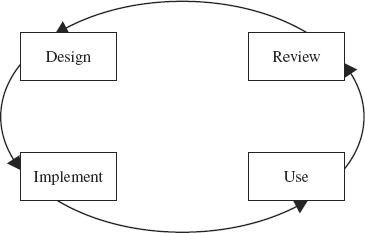Chapter 3
Designing the System
3.1 INTRODUCTION
In the last chapter, we presented the key elements of a performance measurement system and the tools you can use to build it. However, a performance measurement and management system goes far beyond the tools you use. Studies have shown that nearly 70% of measurement and management systems are not implemented successfully. That represents a great deal of wasted time and effort, not to mention the many disgruntled and demotivated people you leave behind. Understanding the tools and how they are used is only half the battle; how you implement your system is crucial to your success.
In this chapter we will take you through the essential ‘softer’ elements of designing and implementing a performance measurement and management system. We start by outlining the life cycle of a performance measurement process and then focus on design and implementation.
3.2 A FOUR PHASE LIFE CYCLE
There are four stages in the life cycle of a performance measurement and management system (see Figure 3.1), which we will outline below, before going on to describe in detail the design element.
Figure 3.1 Four phases of a performance measurement and management system life cycle

The design phase focuses on developing the key elements of your system: creating the success map, determining the key objectives, defining the measures, setting the targets and identifying ...

